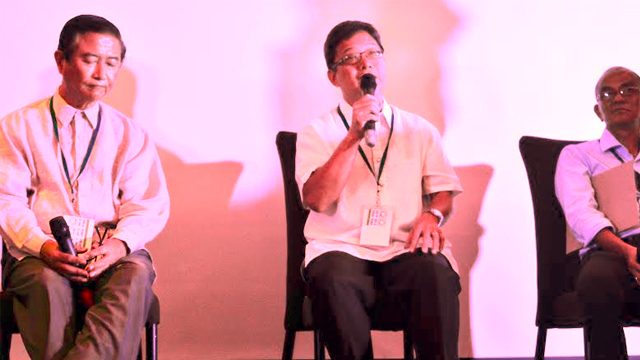SUMMARY
This is AI generated summarization, which may have errors. For context, always refer to the full article.

MANILA, Philippines (UPDATED) – ASEAN-accredited architect and Frima Global Home Corporation President Robert Mirafuente called on his Filipino colleagues to keep pace with the ongoing Association of Southeast Asian Nations (ASEAN) integration.
“We just need to prepare professionally and be globally competitive by consistently educating ourselves. Attending forums like this is a positive action to transform better,” Mirafuente said at the 13th Green Forum organized by the Green Architecture Advocacy Philippines (Green AP) on Friday, July 15.
Mirafuente said that most architects in the Philippines have only completed their undergraduate degrees while their counterparts in other ASEAN countries have masteral and doctorate degrees.
Mirafuente pointed out that only 52 out of the 39,000 registered architects in the Philippines, including the 2016 board passers, are accredited to practice in other ASEAN countries.
“Unfortunately for Filipino architects, we are only at level 6. But many of our counterparts in the ASEAN region are at level 7 and level 8,” said Mirafuente, referring to the Philippine Qualifications Framework (PQF), which indicates how architects are rated in terms of educational attainment.
According to the PQF, architects with undergraduate degrees fall under the 6th level while those who have obtained masteral and doctorate degrees are on the 7th and 8th levels, respectively.
Indonesia has 90 ASEAN architects and Singapore has 78. Meanwhile, Malaysia only has 35 ASEAN architects while both Cambodia and Brunei have none.
Mirafuente urged all Filipino architects to apply for the accreditation since they are hoping to have “borderless practice” of architects within ASEAN by 2020.

Improving the quality of Filipino architects
The current level of Filipino architects is a “reason to emphasize” the importance of the continuing professional development (CPD) program, according Mirafuente.
The Architecture Act of 2004 or RA 9266, already promotes the CPD, seeking to improve the quality of architects, enhance their competence, and ensure that they keep up with new technologies and practices.
CPD, according to RA 9266, refers to a “sustaining and progressive learning process that maintains, enhances, or increases the knowledge and continuing ability of architects.”
However, under the law, professional development is only “voluntary” for architects.
A proposed CPD measure, which was approved by the Senate in August 2015, makes the continuous learning process a requirement.
“We are just waiting for the signature of President Duterte,” said Mirafuente.
Once passed into law, at least 30 units of CPD are required for the renewal of professional license for architects, Mirafuente said.
But in the end, there are “no professional secrets” that make Filipino architects stand out in the global practice of the profession.
“We just have good Filipino traits like being warm-hearted and hardworking. We are resilient,” stressed Mirafuente.
The experience of the Philippines as a developing country that is vulnerable to disasters also puts local architects in a good position to become experts in sustainable global design, according to Mirafuente.
“We can become experts in disaster-resilient design or we can become green architecture specialists or consultants to the other countries which are increasingly affected by climate change.” – Rappler.com
Editor’s Note: A previous version of this story said that the 2016 board passers are not included in the registered architects in the Philippines. This has been corrected. We regret the error.
Tessa Barre studies journalism at the University of the Philippines – Diliman. Rambo Talabong studies Communications at the Ateneo de Manila University. Tessa and Rambo are Rappler interns.
Sustainable city image via Shutterstock
Add a comment
How does this make you feel?
There are no comments yet. Add your comment to start the conversation.